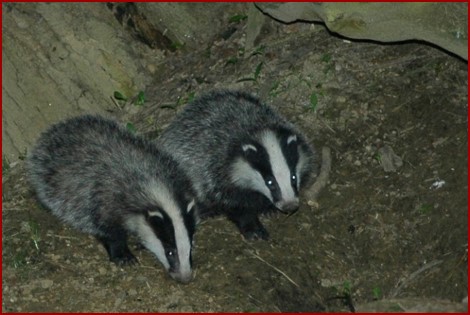News
You take the high road and I’ll take the low road: David Macdonald reports on a WildCRU collaborative study that reveals that Scottish badgers favour warmer lowland sites, but avoid human infrastructure
The WildCRU’s ever-growing portfolio of work on climate change, led by Chris Newman, has shown that badger population dynamics and behaviour respond sensitively to trends and variability in weather, making badgers an excellent sentinel species for climate change research.
Building on this platform, and using camera trap data incidental to our work on Scottish wildcats, we have just published a paper {hyperlink} in collaboration with André Silva and Gonçalo Curveira-Santos, involving Uppsala, Aveiro and Lisbon Universities, revealing how badgers respond to weather conditions on an extensive biogeographic scale in the Scottish Highlands.
Through the autumn and winter (October – March) of 2010 – 2013, we collected 527 badger images from 168 camera traps (8610 effective trap days) at 11 sites spread over 50,000 km2, and found that the likelihood of detecting a badger per site (termed ‘occupancy’) was greater in areas with warmer minimum winter temperature at lower elevation. Based on this discovery, we divided sites into two topo-climate types: cooler upland (average temperature < 0.3˚C; average elevation > 247m) and warmer lowland sites (average temperature > 1.2˚C; average elevation < 133m). And this is where it gets especially interesting – at upland sites, badger occupancy benefitted from the availability of agricultural patches (likely due to the additional food resources these provide). In contrast, at lowland sites, agricultural patches were broadly available and did not present a limiting factor; rather we found that badgers avoided human infrastructure, with badgers steering clear of settlements and roads.
This result is both fascinating and important. It is too easy to assume that all members of a species will respond similarly to environmental stresses, leading to the design of poorly fitted conservation measures. For instance, predictions are for a 1-3°C increase in mean winter minimum temperature for Northern Scotland by the 2050s (UKCP09 climate projections, based on the IPCC’s Special Report on Emissions Scenario (SRES) A1B: Medium emissions estimates). Simplistically, we might project that this will likely ameliorate the weather stresses badgers are under, and push favoured agricultural land use further up hillsides. Simultaneously, however, a 5% increase in the human population of the Scottish Highlands is predicted by 2037 (Population Projections for Scottish areas, 2014). This will undoubtedly cause villages to spread and road networks to sprawl, especially in more populated lowland sites. From this juxtaposition we see that while a milder future might benefit upland badger populations currently living under sub-optimal climatic conditions, lowland badgers may not receive so much benefit from this change. Furthermore, lowland populations could even decline due to human encroachment.
And so we conclude that while it is tempting to imagine that some cold-limited species will simply benefit from warming conditions along the high latitude edge of their distribution, it is crucial to also account for co-active environmental factors and counteractive human influences.
See: Silva, A.P, Curviera-Santos, G. Kilshaw, K., Newman, C., Macdonald, D.W. Simões, L & Rosalino, L.M. (2017). Climate and anthropogenic factors determine site occupancy in Scotland’s Northern-range badger population: implications of context-dependent responses under environmental change, available through early view at Diversity and Distributions. Subscribers can read the article online here: http://onlinelibrary.wiley.com/doi/10.1111/ddi.12564/full






